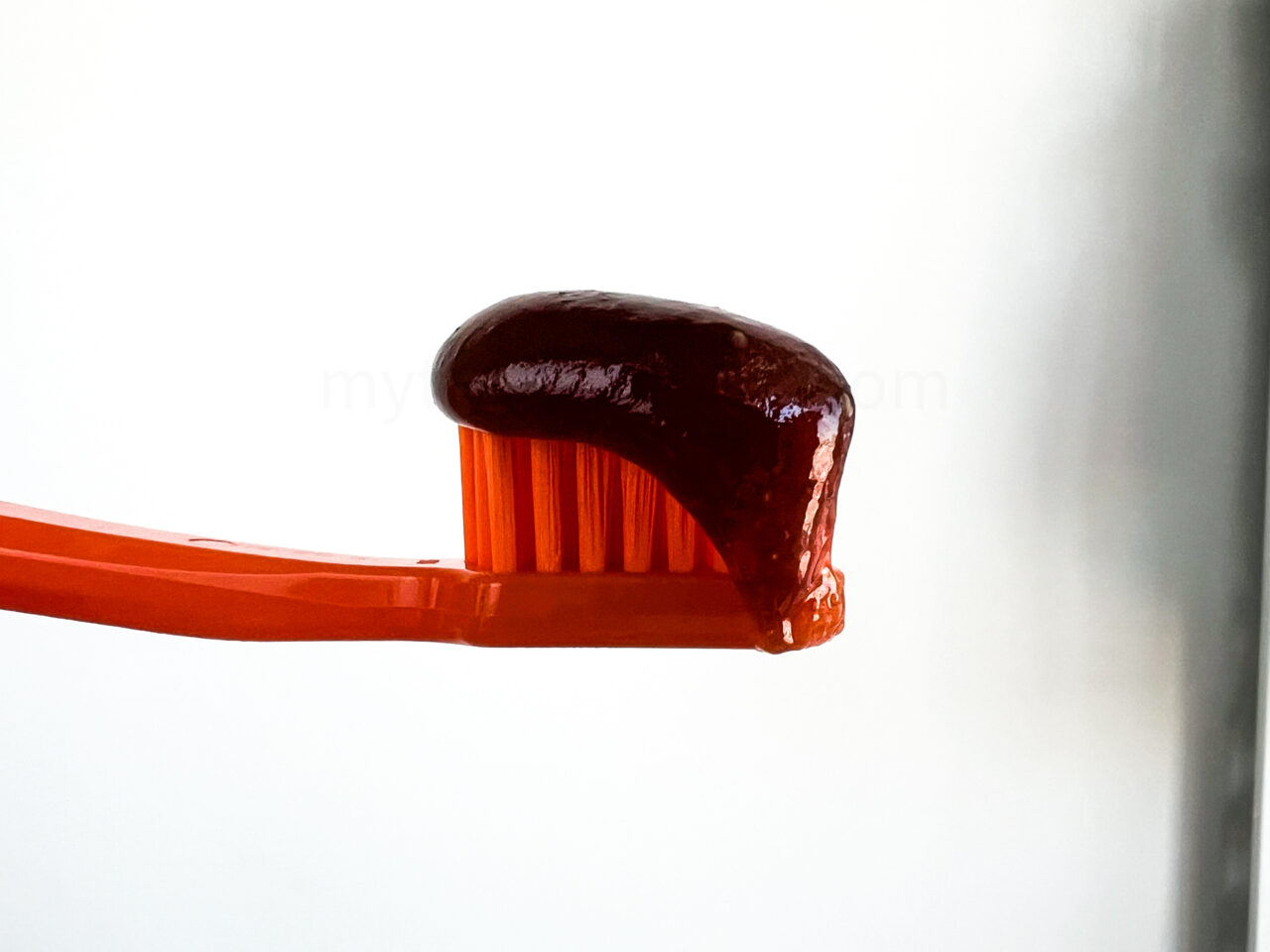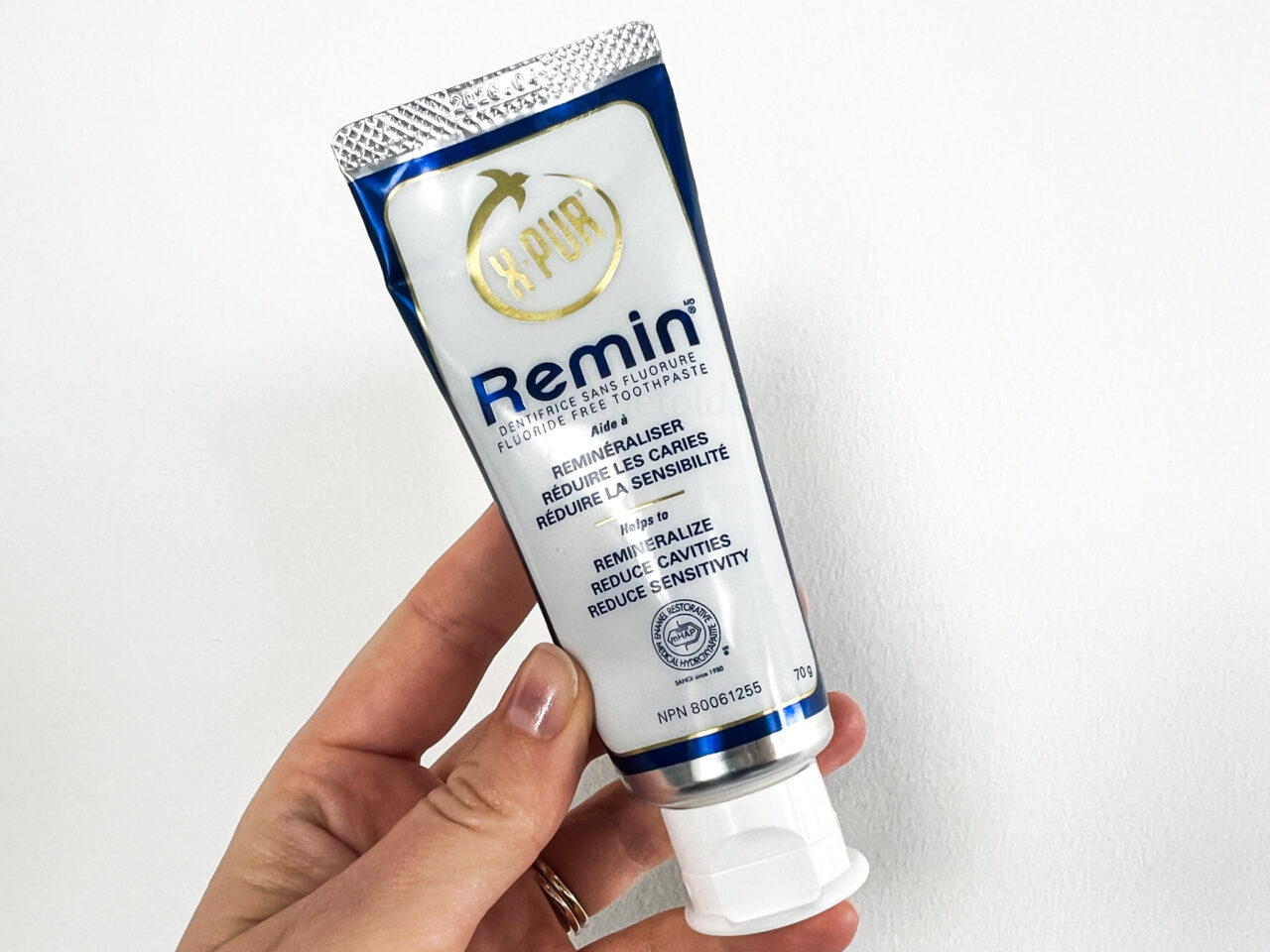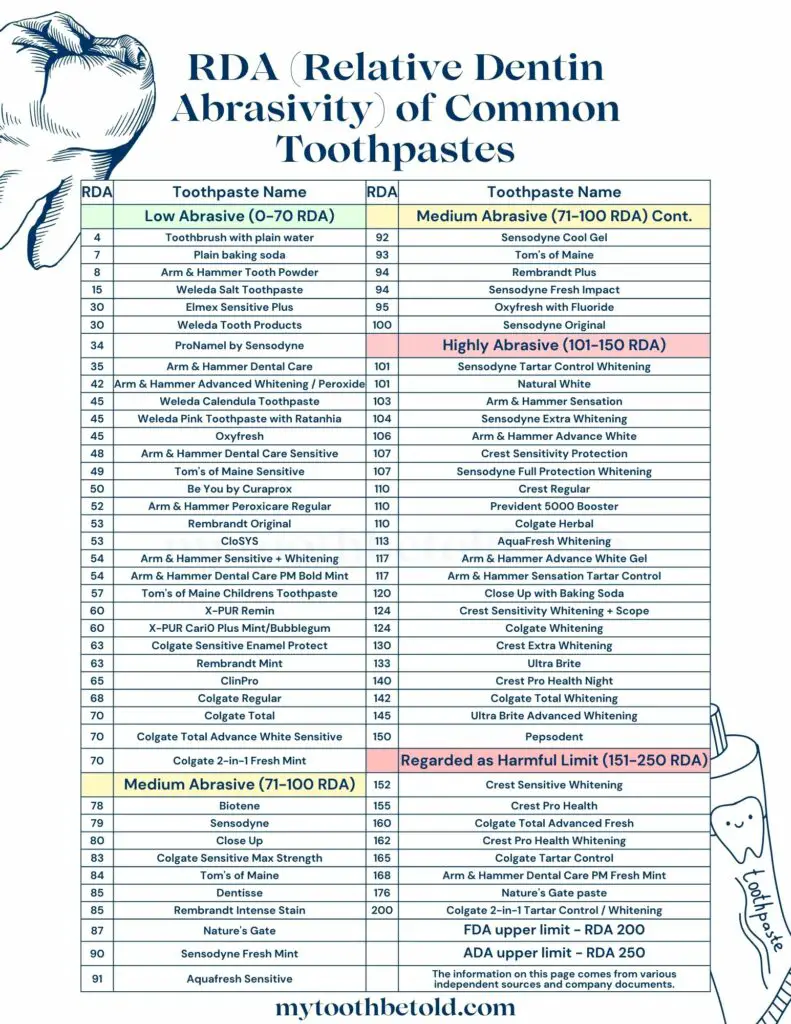
Toothpaste is a popular topic in my dental chair. I always discuss with my patients the type and amount of toothpaste they use. In commercials, we often see a large amount of toothpaste being applied on the toothbrush, which is clever marketing to encourage people to use more product. So, how much toothpaste is actually needed for the best effect?
When toothbrushing, use a pea-sized amount of toothpaste for an adult and a grain of rice-sized for a child. Using more doesn’t improve cleaning and leads to unnecessary consumption. Stick to the recommended amount for effective cleaning while being mindful of product usage.
In this post, I share the science and reasons why you do not need more than a pea-sized amount of toothpaste, the effects of toothpaste on teeth, the consequences of using too much or too little, and what you should be most mindful of when choosing a toothpaste… and no, it is not the flavour!
How much toothpaste to use: the proper amount
Many toothpaste brands claim to solve all oral health issues, but the truth is they cannot replace the mechanical action of brushing and flossing. Toothpaste alone won’t fix problems like cavities or gum disease. Effective oral hygiene involves brushing and flossing to remove plaque and debris manually.
The Marketing Habit
Toothpaste commercials often show a full swoosh of toothpaste covering the toothbrush bristles. This visual cue creates a habit in consumers, making them believe more toothpaste means better cleaning. However, this habit primarily benefits toothpaste manufacturers by increasing sales, as more toothpaste used means more toothpaste bought.
How Much Toothpaste to Use: The Proper Amount
The proper amount of toothpaste for an adult is a pea-sized dab on your toothbrush. For children under three, a smear the size of a grain of rice is sufficient, but if they cannot spit, avoid fluoride and only use a very small amount.
Can You Use Too Much Toothpaste?
Excessive toothpaste can create too much foam, making brushing difficult, decreasing tactile sense, and increasing the risk of swallowing fluoride, especially in children. Overuse can also lead to faster depletion of your toothpaste supply and more frequent purchases.
Too much toothpaste can mask the feeling in the mouth, leading to a false sense of security that the mouth has been cleaned effectively.
Remember, it’s not the toothpaste doing the heavy lifting; it is the toothbrush’s mechanical motion. I first focus on educating people to invest in a quality toothbrush, then on brushing technique, and then on toothpaste.
Can You Use Too Little Toothpaste?
Using too little toothpaste might not provide the necessary active ingredient protection for your teeth, especially if you live in an area with non-fluoridated water, or your diet is acidic, or you suffer from dry mouth.
A pea-sized amount for adults ensures you get the benefits of the remineralizing agent while maintaining proper oral hygiene, and the same with a grain of rice size for kids.
To ensure you use the most evidence-based dental hygiene products, check out my Adult Resource Page, which I created here.
The Role of Sodium Lauryl Sulphate (SLS)
Sodium Lauryl Sulphate (SLS) is a common ingredient in toothpaste that creates foam. Many people equate foam with cleaning power, but SLS can have adverse effects.
This study states: “Exacerbation of RAS condition, compromising oral wound healing, and irritation of the oral mucosa are concerned among the adverse effects.”
Source
While many companies resist changing their formulas, consumers can choose products without SLS.
Read Now: SLS Containing Toothpaste; Cause of Tissue Peeling in Mouth
I have not used toothpaste with SLS in it for over five years. If I do, my gum tissue becomes raw, inflamed, and irritated.
Furthermore, some toothpaste brands pump so much SLS into their toothpaste that it foams so much that people get a false sense of security that their mouth has been sufficiently cleaned.

The Real Work of Toothbrushing
Also, it’s important to understand that it’s not the toothpaste doing the heavy lifting—it’s the brushing action itself. Toothpaste does offer benefits such as:
- Fluoride: Helps prevent cavities by strengthening enamel. (Respecting individual choices about fluoride use.)
- Active Ingredients: Potassium nitrate for sensitivity, or Remin’s nano-hydroxyapatite, aids in remineralizing tooth enamel and reducing sensitivity.
The primary goal of brushing and flossing is to remove and disrupt bacteria and food debris in your mouth. This manual removal is crucial, as the plaque (bacteria) on your teeth is very sticky and needs to be physically scrubbed away.
Common Misconceptions:
Many toothpaste brands claim to solve all oral health issues, but the truth is they cannot replace the mechanical action of brushing and flossing. Toothpaste alone won’t fix problems like cavities or gum disease. Effective oral hygiene involves brushing and flossing/interdental brushing to remove plaque and debris manually.

pH and Abrasivity of Toothpaste: Key Factors for Oral Health
Your toothpaste’s pH level and abrasivity play significant roles in maintaining your oral health. A toothpaste with a high pH (alkaline) can help neutralize acids in the mouth, reducing the risk of enamel erosion. Conversely, a low pH (acidic) toothpaste can contribute to enamel wear over time.
Abrasivity is another critical factor; while some abrasiveness is necessary to remove plaque and stains, too much can damage your enamel. Look for toothpaste with low Relative Dentin Abrasivity (RDA) scores to protect your teeth while keeping them clean.
Read Now: Preventing Tooth Translucency: 13 Tips to Maintain Enamel
Be an Informed Consumer
The dental industry is worth billions, and companies are eager to maximize profits. This can lead to misinformation and marketing tactics designed to encourage overuse of products. As consumers, it’s essential to be aware and ask questions. Educate yourself about what you truly need for oral health.
Before entering dental hygiene school, I didn’t know any of this. Learning about the realities of oral hygiene and the marketing tactics used in the industry was eye-opening. It’s frustrating that this information isn’t more widely known.
Be aware and make informed choices about your oral hygiene routine. Remember, a small, pea-sized amount of toothpaste is all you need. Happy brushing!
Holly Verran, RDH

